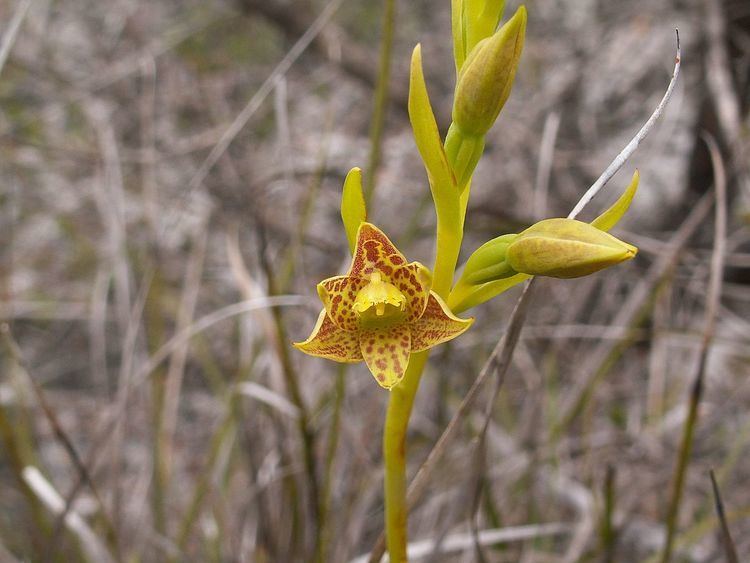Family Orchidaceae Rank Species | Subtribe Thelymitrinae | |
 | ||
Similar Thelymitra, Thelymitra campanulata, Thelymitra javanica, Thelymitra macrophylla, Thelymitra antennifera | ||
Thelymitra villosa, commonly called the custard orchid is a species of orchid which is endemic to Western Australia. It is a tuberous, perennial herb, 0.4 - 0.6 metres tall with yellow and brown flowers from September to November.
Contents
Description
The leaf of T. villosa is 60–100 mm long and 20–50 mm wide and covered with white, silky hairs on both surfaces. The flowerstem is 300–600 mm long with 5–20 flowers. Each flower is 30–40 mm across and yellow with varying amounts of red-brown markings. The flowers which are similar to those of the Leopard Orchid, Thelymitra benthamiana and the Sun Orchid Thelymitra sargentii but T. villosa is distinguished from them by its leaf, which is shorter, broader and hairy.
Taxonomy
The species was first described by John Lindley in 1840 in his A Sketch of the Vegetation of the Swan River Colony (1840).
He also informally described it as "A very fine species with large, stellate, yellow flowers." The specific epithet (villosa) is derived from Latin, villosa, "hairy". (An alternative common name is Hairy Thelymitra.)
Distribution and habitat
The species is endemic to the south western corner of Western Australia, occurring in the Avon Wheatbelt, Esperance, Geraldton Sandplains, Jarrah Forest and Swan Coastal Plain biogeographic regions. It grows in sandy clay, grey, white or yellow sand which is wet in winter.
